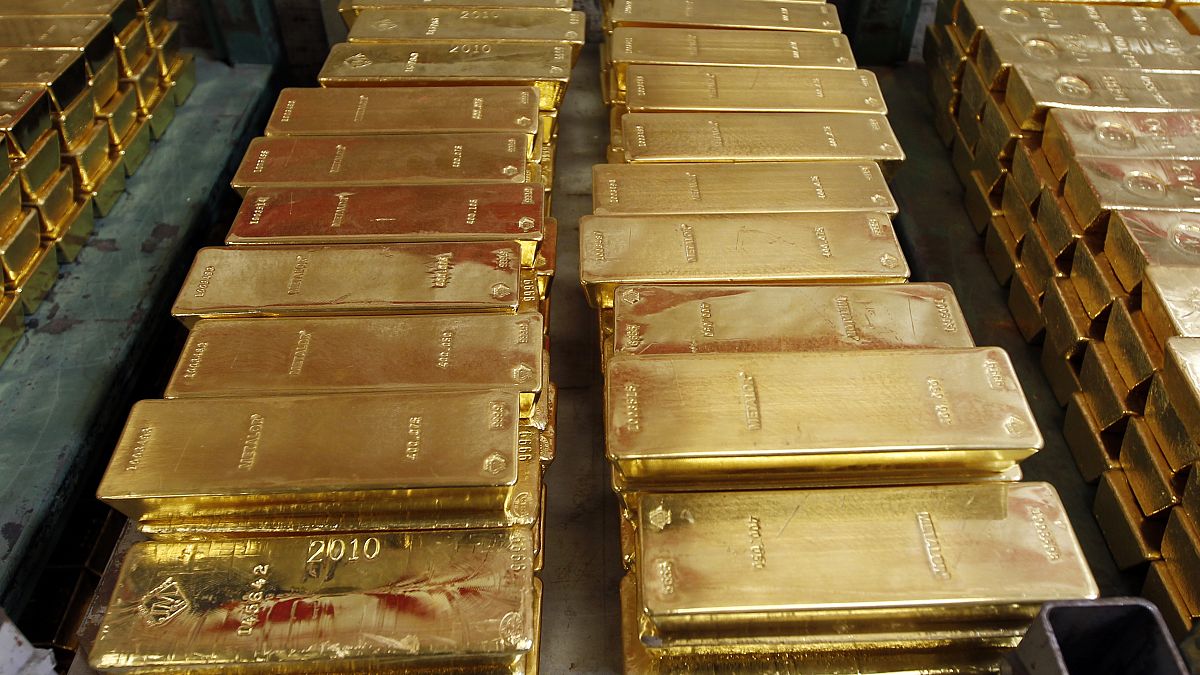The president of the National Bank of Poland, Adam Glapinski, recently revealed that the central bank would continue to buy gold, and is aiming for the precious metal to make up 20% of the bank’s reserves.
The National Bank of Poland (NBP), also known as the Narodowy Bank Polski, became the joint biggest gold buyer amongst central banks in the second quarter of 2024, tying with India, according to the World Gold Council. This was after the NBP bought approximately 19 tonnes of the precious metal.
The president of the National Bank of Poland, Adam Glapinski, also said earlier this year that the central bank was planning to ensure that gold made up 20% of its reserves. At present, gold accounts for about 14.7% of the NBP’s reserves.
Grzegorv Dróżdż, market analyst at Conotoxia, said: “At the end of the second quarter of this year, Poland’s gold reserves rose to 377.4 tonnes, and the pace of purchases of the bullion, held mainly at the Bank of England, since April this year has surpassed even the world’s largest economies.”
During the second quarter of the year, the price of gold also crossed the record level of $2,500 (€2,249.26) per ounce.
This has led to more speculation about whether gold may be a good investment right now and why central banks have been scrambling to shore up reserves of the precious metal lately.
Why are central banks buying up more gold bullion?
One of the main reasons that central banks are stocking up more on gold recently is to be able to sufficiently diversify their reserves to protect against macroeconomic uncertainty and geopolitical shocks.
This is because, in terms of economic and geopolitical volatility, when currency and other asset prices may fluctuate, gold is seen as a safe haven asset and an inflation hedge.
As such, gold’s relatively stable performance during times of crisis, as well as its inflation hedge qualities are driving factors behind central banks picking the metal. It is also an effective way to diversify central bank portfolios and is considered to be highly liquid, with no default risk.
It is also less affected by policy risk and can be used as a valuable collateral and policy tool. In some cases, gold can also help countries facing international sanctions, such as Russia, to avoid them. This in turn, incentivises these countries to buy more gold and use it to help maintain their liquidity, in case other means of finance are blocked off or difficult to access.
In other cases, central banks also buy more gold to help their countries reduce dependence on globally dominant currencies such as the US dollar.
According to the World Gold Council, central bank gold demand came up to 183 tonnes in the second quarter of the year. This was a 6% increase year-on-year, but a 39% drop quarter-on-quarter.
Net buying in the first half of the year also came up to 483 tonnes, which was 5% more than the corresponding period last year.
Dróżdż also explained: “In Q2 2024, global gold demand, excluding over-the-counter (OTC) investments, fell by 6% year-on-year to 929 tonnes. The decline is mainly due to a 19% reduction in jewellery consumption, in response to record high prices for the king of metals.
“However, including OTC investments, total gold demand increased by 4% year-on-year to reach 1,258 tonnes, the highest level since 2000. Much of this demand was generated by central banks, which increased their purchases by 6%, adding 183 tonnes, mainly to protect and diversify their portfolios.”
Apart from the National Bank of Poland and the Reserve Bank of India, the Central Bank of Turkey also continues to heavily buy gold, adding 15 tonnes to its reserves in the second quarter of the year. With this amount, Turkey’s central bank has bought 45 tonnes of gold so far this year.
Jordan, Qatar, Russia, Uzbekistan, Kyrgyzstan, Iraq and the Czech Republic’s central banks also bought significant amounts of gold during Q2.
On the other hand, the People’s Bank of China (PBoC) considerably slowed its gold-buying trend in the second quarter of the year.
In Poland, gold demand has surged following the COVID-19 pandemic and because of the Russia-Ukraine war. Several investors also fear that the Russian invasion in Ukraine may spill over to Poland and want to prepare themselves in case of such a scenario by investing more in gold.
In other parts of the world, stubbornly high inflation has also driven people more towards gold, with other geopolitical shocks such as the Russia-Ukraine and Israel-Hamas wars exacerbating this trend.
Apart from gold, the National Bank of Poland has also revealed that it is investing in foreign equities and corporate bonds with the help of exchange-traded funds (ETFs), as another way to diversify its reserves.
What factors impact the gold market?
There are several factors impacting the gold market, namely, US dollar movements, real and expected inflation rates and gold jewellery demand, amongst others. Central bank purchases of gold can also have a significant impact on the metal’s prices.
Although to a lesser extent, gold mining production can also have an impact on prices. Gold prices can spike if gold mining companies’ have to spend more on production costs, such as digging deeper mines, or face other issues such as labour strikes, environmental protests and weather phenomena, to name a few.
At present, most of the world’s gold mining output comes from China, Australia, Russia, Canada and the United States.
Dróżdż also said: “The gold market, like many others, is driven by two forces: demand and supply. In the past few quarters, an increase in demand has been particularly evident.
“Moreover, the continued weakening of the dollar may indicate that gold could outperform other key assets in the near term. Conotoxia’s baseline scenario assumes that gold price momentum could slow down by the end of the year, with a possible correction, but is likely to remain above the $2,500 per ounce level.”















